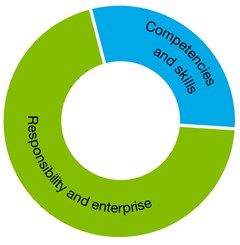Explore content
Typically, by the end of Year 4, students:
Identify and clarify information and ideas
identify main ideas and select and clarify information from a range of sources
Organise and process information
collect, compare and categorise facts and opinions found in a widening range of sources
Apply logic and reasoning
identify and apply appropriate reasoning and thinking strategies for particular outcomes
Typically, by the end of Year 4, students:
Pose questions
pose questions to expand their knowledge about the world
Imagine possibilities and connect ideas
expand on known ideas to create new and imaginative combinations
Consider alternatives
explore situations using creative thinking strategies to propose a range of alternatives
Seek solutions and put ideas into action
experiment with a range of options when seeking solutions and putting ideas into action
Transfer knowledge into new contexts
transfer and apply information in one setting to enrich another
Draw conclusions and design a course of action
draw on prior knowledge and use evidence when choosing a course of action or drawing a conclusion
Evaluate procedures and outcomes
explain and justify ideas and outcomes


